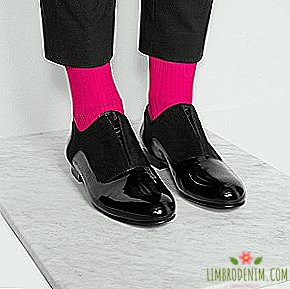Sportswear for women: From emancipation to objectification
A hundred years ago, a woman’s place was anywhere, but not in sports. It was considered that it is absolutely unnecessary for us to show a high result, to win competitions and to participate in general in anything other than sports in the backyard. Clothes for such leisure was quite everyday, that is, an uncomfortable, constraining movement. Today, athletes around the world are actively participating in competitions, but the problem of women's athletic form has not disappeared: in its creation, the principle of “beauty” still dominates comfort and, in addition, is seasoned with good old objectification. The July Wimbledon and the recently launched Olympic Games in Rio are competitions in which athletes continually beat world records, but still complain about the impracticality of clothing — a reason to recall that women do not always have a full choice. Even when it comes to clothes.
At the beginning of the twentieth century, women's sportswear had nothing to do with practicality, providing mobility and work on the result - it was a matter of the principle "say thank you for letting the ball hold." For example, for playing golf, they wore blouses and skirts, similar to those in which it was customary to travel to the city on business. Only by 1910 in tweed jackets for competitions in golf began to sew the folds on the sides, so that the fabric is not torn during the sharp swing of the club. In tennis, too, was supposed to play in long skirts, starched blouses, jackets with narrow sleeves, restraining movement, and certainly in hats. In 1917, Vogue, an authority among jetsetters, in a review of alpine skiing fashion called for women to hide their skirts far away and dissect the slopes in jodhpurs - riding breeches.
Society gradually became accustomed to the fact that women have the right to comfort. At the beginning of the last century, mass production of clothes was well established in the United States, so that it was there that they began to sew "special" women's clothing for sports, in particular, shorter skirts than usual. Women in trousers became an acceptable sight, however, this fashion was not always allowed beyond the beaches and promenades. In the Russian Empire, the desire of women to master new sports - skiing and skating, athletics and boxing - has become one of the most important manifestations of the movement for bodily emancipation. True, the girls also boxed in long skirts, but the popularity of pants in the local latitudes contributed to the spread of cycling among the middle-class urban women. Already in the 30s, trousers entered the ski fashion all over the world. Women no longer had to conquer the slopes in jodhpurs - they began to sew long, loose trousers with cuffs and short jackets with wide shoulders, under which it was convenient to hook a sweater.
While women in ski and sea resorts wore trousers, sexism still reigned in the “noble” big tennis. In 1922, Olympic champion, Frenchwoman Suzanne Lenglen shocked the public when she entered the Wimbledon tournament in a shortened skirt and put on a bandage instead of a cap to secure a normal view of the court. As a result, by the beginning of the 1930s, tennis players were already allowed to compete “with their heads uncovered.” In 1932, the American Alice Marble appeared on the court in white shorts, which caused a real scandal and paved the way to common sense regarding women's sportswear. In the 1930s, women already participated in many competitive sports — from water skiing and mountaineering to shooting and fencing — so gradually their needs were taken into account in the production of clothing. Short tennis dresses appeared, and for golf and shooting, suede jackets and pleated skirts, slacks or culottes were chosen.
Utilitarian fashion contributed to the emergence of sportswear for women: denim uniforms and overalls moved from the factories to the cloakrooms of fans of outdoor activities, while motorcyclists began to wear aviation jackets on sheepskin and tweed bomber jackets. After the Second World War, in the production of pullover dresses and tops for gymnastics, synthetic fabrics start to be used, and women's sportswear becomes more technological - it is no longer necessary to fasten and unfasten it endlessly. Nylon and other synthetics combined with the technology of sewing military uniforms did an incredible job: now you could hide the hood in the collar, and in sports jackets created pockets for snacking. In the mid-60s, they also remembered the color: jersey t-shirts and tracksuits began to be produced in bright blue and bottled colors, which foreshadowed a real color boom in sportswear in the 80s.
Today, women's sportswear is more technological, and women themselves, in general, have won their place in big-time sports. True, while German, Russian or Chinese runners and swimmers compete in open suits and swimsuits, their Muslim colleagues perform in hijabs, long ankles and tights with long sleeves. In the complex and ambiguous patriarchal value system on which Muslim cultures are built, a covered head and body sometimes turn out to be the only way for women to play sports, and sometimes they are a conscious choice. However, the first world about the existence of such a choice sometimes forgets and longs to free the “poor color sister” from oppression at any cost. In 2007, FIFA banned the hijab in international women's matches, while for some of them, such as Australian football player Assmaa Helal, wearing the hijab is an important personal choice. The ban was lifted in 2012, which was a relief not only for Muslim athletes, but also for fans in many Islamic countries: football is very popular there, but women are not allowed to watch men's matches.
The inclusion of Muslim women in sports is promoted by a special “sports” hijab: it looks like a hood, is quite comfortable and does not introduce too striking differences in the appearance of sportswomen. Dutch designer Cindy van den Bremen began its development back in 1999, when she learned that in local schools girls were not allowed to go to physical education classes in hijabs. Nevertheless, for many athletes the impossibility of covering their heads and bodies during competitions is a real obstacle in their careers. Just five years ago, the International Federation of Weightlifting allowed competitors to perform in a form that covers their arms and legs. In turn, fencer Ibthiha Muhammad, the first representative of the US Olympic team in the hijab, chose fencing from all kinds of sports for the reason that it is possible not to bare the body, while performing in standard form.
Attempts to give the world all the benefits of hegemonic democracy are meaningless, but at times they resemble a well-known picture-meme with an oriental woman in a niqab, in which only her eyes are visible, and a blonde in a bikini, who has everything open except for her own eye - they are wearing a black bandage. As is known, emancipation does not negate the good old objectification. In the 80s and 90s, erotic posters Tennis Girl and posters with buttocks of female volleyball players were in use. Fetish in every way contributes to the design of women's sportswear. In beach volleyball, these are most often bikini bottoms or shorts and a short top (an alternative for cold weather is a long-sleeved top and leggings). Men are supposed to compete in T-shirts, even in the hottest climate, because their names and the country they represent are indicated on the back. Women could quietly play beach volleyball topless to the delight of "fans": the name and belonging to the team often indicate shorts, swimming trunks or leggings - in the buttock area and above the groin. A separate conversation is the women's league of American football Legends Football League (formerly the Lingerie Football League), created as an alternative to boring TV content during the Super Bowl draw breaks: of course, unlike men's clubs, women's teams compete in underwear.
Tennis-players often complain about the inferiority of the sporting form: either the skirts turn out to be too short and the sportswomen cannot bend over, the straps do not hold the chest, or the mini-shorts restrain movement. This year, at the Wimbledon tournament, many sportswomen were given a new model of the Nike Premier Slam dress, which turned out to be a real catastrophe: the dress of a free cut from too light fabric continually rose like a sail, and “fluttered in all directions”, and the lack of shorts in the set aggravated the situation. British Katie Swan had to put on her spare shorts and put a hemline on them, Swede Rebecca Peterson put on a long-sleeved sweater overhead, Czech tennis player Lucija Safarzhova fought with a dress throughout the match, and the winner of the tournament, Serena Williams, wisely refused to wear Premier Slam to make a match. .
The design of women's sportswear has always come from fashion trends. Back in 1947, British tennis player and fashion designer Ted Tinling, inspired by new look Diorovsky, decided to return elegance to the female form using pleated waffle dress, and two years later, for an American athlete Gassi Moran, he created lace shoes for the Wimbledon tournament. Today, adidas collaborates with Stella McCartney and Yoji Yamamoto, Raf Simons and Mary Katranza, and Nike creates capsule collections with Acronym Berlin-based designer Johanna Schneider and Japanese brand Sacai. The last collaboration caused outrage on the Web: judging by the reviews on Twitter, the impractical design for the sake of elegance, the abundance of ruches and folds for many fans of sports style is far from the limit of dreams. Nike called the collection "a bold expression of femininity," and journalist Megan Wiegand in the Slate material said that this concept is "comical and insults athletes around the world."
There is nothing shameful in the love of fashion and the desire to be girly, but in this sense, internal misgygy is manifested among women. Regulars of the gym often condemn the choice of girls who are engaged in bright tight-fitting shorts, mini-tops of flashy colors or with makeup. We talk a lot about the fact that sexuality and fashion is an empowerment, but as soon as we encounter manifestations that are different from ours, the way of emancipation deftly turns into a tool of objectification: it’s a gym here, not a brothel. It's time to learn that girls have the right to be sexual as they please and anywhere, but the problem is different: the producers and consumers of women's sportswear often perceive it as a segment of mainstream fashion. Sometimes important trends come from it, for example, body positivity: Nike recently released a line of sports bras, taking into account the characteristics of various body types.
Nevertheless, in the design of sportswear for women, the desire to "make beautiful" is often more important than concern for technology and comfort. For example, leggings for yoga become transparent when stretched, and at sports forums they regularly publish questions and tips on which manufacturers should be avoided for this reason. For lovers of training with the "iron" is not easy to find in the store shorts, comfortable for squats or attacks: as a rule, the landing is too low and the shorts are constantly moving down, showing the underwear. But the colors are “beautiful”: men have a wide choice of black and gray shapes with small bright details, while lovers of muted tones have to work hard to find the right model for the top or shorts. An ordinary line of sportswear for women would not be in the way of not only a wider assortment, but also the division of products into a kind of street sports cosplay and a proper sports uniform with a focus on the needs of athletes. Otherwise, with all the triumph of manufacturability, we will return a hundred years ago, when women were forced to go riding almost in evening dresses.
Photo: Wikimedia Commons (1, 2), ResportOn / Facebook, NikeLab x Sacai








